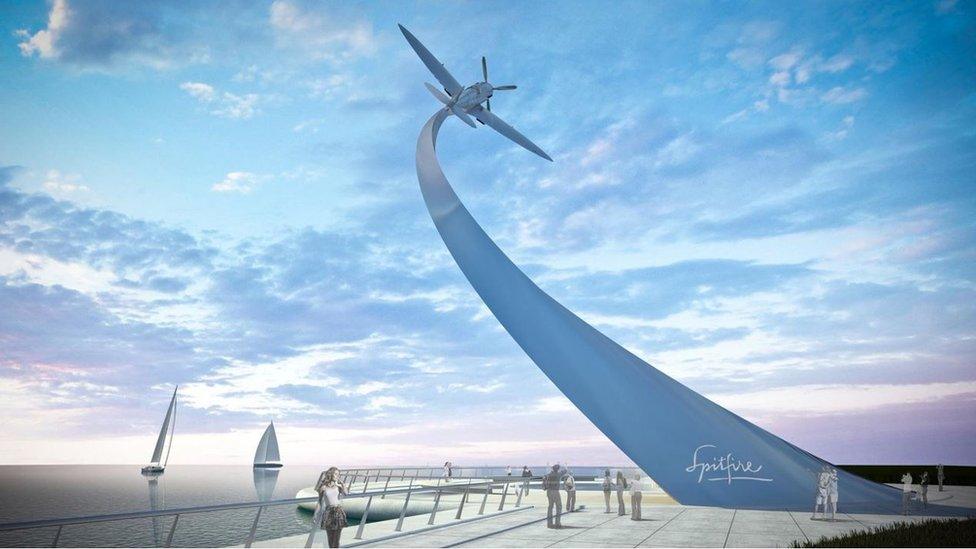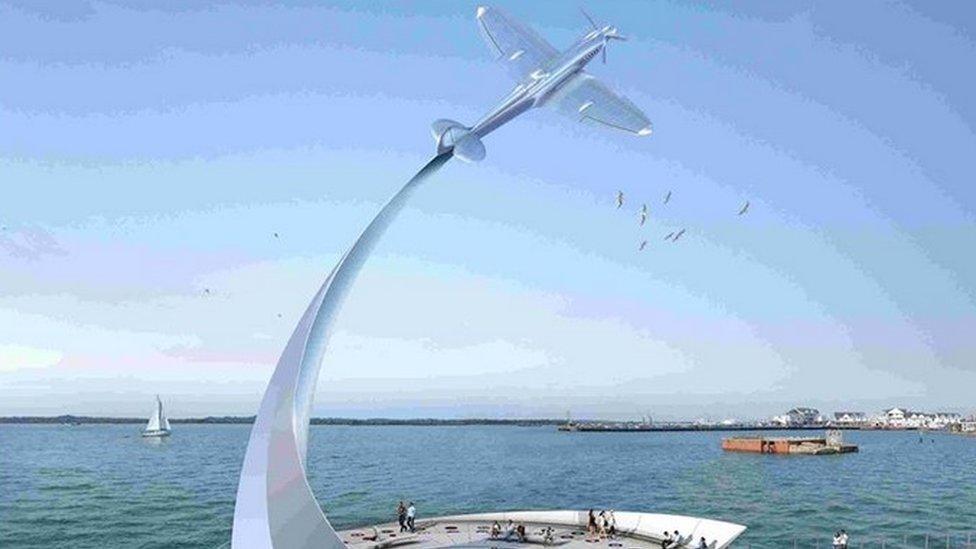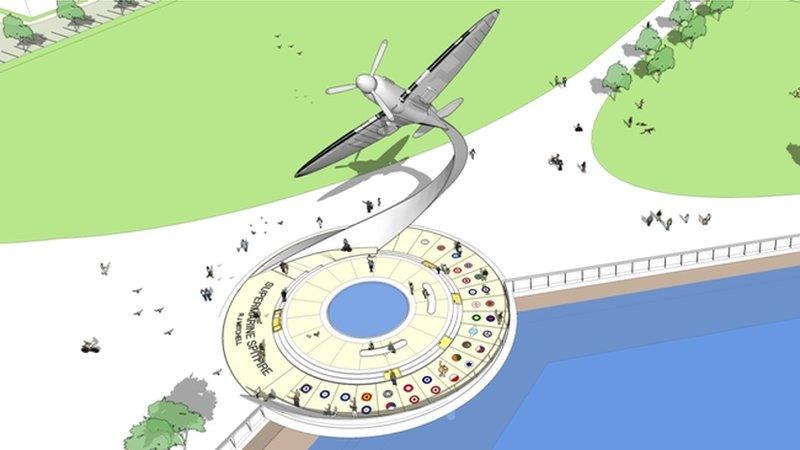Southampton Spitfire monument bid awarded £3m by government
- Published

The memorial would be built alongside the River Test in Southampton
A campaign to build a Spitfire monument in the city where the aircraft was first developed has been awarded £3m by the government.
The National Spitfire Project said it hoped to unveil the memorial in Southampton in two years' time.
The winning design for the statue was originally announced in 2010 but the scheme failed to attract funding.
The government award is set to be confirmed by the chancellor in his budget on Wednesday.

A plaque was unveiled in 1996 near the former Supermarine factory site in Woolston
The Treasury said the memorial would honour those who built or flew the aircraft in World War Two.
In a pre-budget statement, it said: "In commemoration of the 80th anniversary of the Battle of Britain in 2020, the memorial will be a permanent centrepiece at the multi-million Southampton Waterfront Development."
The 40m (131 ft)-high monument will depict a Spitfire in flight, on top of a steel "vapour trail" mast.
The MP for Southampton Itchen, Royston Smith, who previously petitioned the government for support, said the £6m scheme required matching funding.
Speaking to the Local Democracy Reporting Service, he said: "I am confident... we will now make the monument a reality.
"Tourists and enthusiasts will flock to visit the monument in Southampton, which is the Spitfire's natural home."
The city council has previously given planning permission for the memorial on its land at Mayflower Park alongside the River Test.
The National Spitfire Project, a charity led by Southampton politicians and businesses, said it hoped to unveil the statue in May 2022.

The Supermarine Spitfire

The Spitfire was designed by Reginald Mitchell at the Supermarine factory in Woolston, Southampton.
The prototype was first flown from Eastleigh Aerodrome, now Southampton Airport, on 6 March 1936.
After Mitchell died in 1937, his successor Joe Smith developed the fighter to make it faster and more powerful.
The aircraft entered service in 1938 with the RAF, which initially ordered 310 aircraft from the Woolston works.
The site was bombed in 1940 at a time when most Spitfire manufacturing was being switched to a more modern production line at Castle Bromwich, near Birmingham.
Spitfires shot down a total of 529 enemy aircraft, for a loss of 230 of their own.
- Published28 March 2017

- Published26 June 2014

- Published7 November 2010